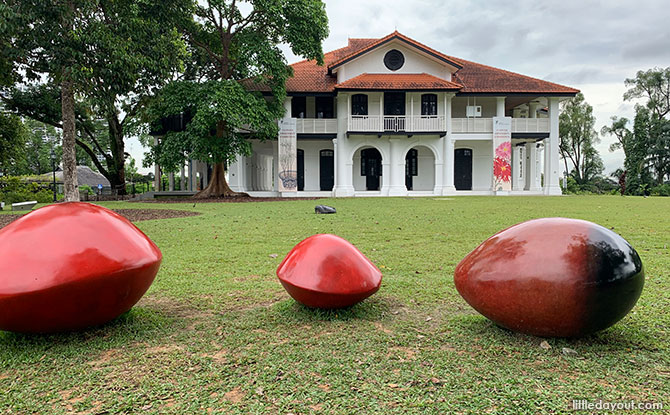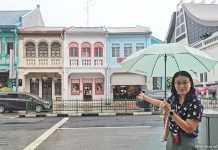
Planning to have a family photoshoot in Singapore? Choosing a family photographer can allow you to capture precious moments with your loved ones and have a set of beautiful memories that you can look back on over and over again.
Family photos help to make a house a home. Therefore, it is no wonder that you will find framed portraits adorning the walls of homes. Whether is a picture of your newborn baby or of the children growing up, family photographs are a lasting and meaningful way to capture joyful memories.
Having a fun family photoshoot in Singapore is a great way to spend time together on a day out. After all, it is an opportunity to capture some memories in unique locations. By hiring an experienced family photographer, you can expect to have some wonderful, inspirational pictures of the family.
Many of the photo studios that specialise in family photography also offer maternity photography and creative newborn or baby photoshoots. A skilled, professional photographer can elevate baby photos to the level of artistry, turning them into keepsakes to cherish for a lifetime.
Keen to take a family photograph by a professional family photographer? Check out our list of family photographers that you can turn to for an amazing family photoshoot in Singapore!
Best Family Photographers for a Wonderful Family Photoshoot in Singapore
Picspirations Photography


Babies grow up too quickly! Capture the precious first moments of your little one, from their first sit to their first walk. Seasoned photographer Alexandria Neoh delights in capturing beautiful moments for each family and crystallising them into photographs to cherish for a lifetime. She also advises and guides her clients to create photographs that make the best heirlooms that can be passed down through the generations.
Picspirations Photography is a boutique photography studio at Beach Road. Apart from creative newborn photography, the studio does children photography, family portraiture, maternity photography, cake smash photography and corporate photography. Take the best shots of your nearest and dearest, and make the moments count!
Where: 7500A Beach Road, 01-314 The Plaza (By appointment only)
Contact: [email protected]
Phone: 9753 1970
Website: Picspirations Photography
White Room Studio
White Room Studio is a naturally lit photo studio that specialises in capturing moments with loved ones. The photographers have over 14 years of experience in family and children photography. Its 2,400 square foot studio is nestled in the historic enclave of River Valley.
The studio has an open balcony, a classical walkway with an arch, a European-inspired hall with tall windows, and a Peranakan wall adorned with textured richness and vibrant tiles. Book the studio for family and kids, graduation, first year birthday cake smash, newborn, pet, couple, pre-wedding and corporate photos.
Where: 219 River Valley Road, Level 2 Singapore 238277
Contact: [email protected]
Whatsapp: +65 8769 6003
Website: White Room Studio
Tomato Photo Studio
View this post on Instagram
Tomato Photo Studio is a professional family and newborn photography studio in Singapore. It was founded in 2007 and promises an easy and effortless photography experience. Master photographer Hart Tan is the only photographer to keep the top-notch quality of photographs consistent. The purpose built studio is stroller and wheel-chair friendly.
Where: 62 Ubi Road, Oxley BizHub, #10-23, Singapore 408734
Contact: [email protected]
Website: Tomato Photo
MamaRazzi
MamaRazzi is a professional photo studio that specialises in quality indoor and outdoor photography and is well-known in the Japanese community in Singapore. The photo studio specialises in maternity, newborn children, mother & child and family photography. Their website also lists different suggested and popular locations for family photoshoots in Singapore.
Where: 1557 Keppel Road #02-08 Singapore 089066
Contact: 81227385
Website: MamaRazzi
KW Photography
Originally from the Netherlands, Karlynne from KW Photography specialises in documentary-style family photography. It is a good way to capture the day-in-the-life type of family photos.
Website: KW Photography
Sugarlight Photography
Sugarlight Photography is run by Swedish portrait photographer Gunilla Lindgren. She specialises in family and maternity photography with a mission to create lifelong memories through exceptional, personalised photography services to help create lasting memories.
Contact: [email protected]
Website: Sugarlight Photography
Fire Fly Photography
Immortalise the finest moments in your life at Firefly Photography. It is a multidisciplinary photo studio that provides professional photography services for families, weddings and events.
Where: 1 Yishun Industrial Street 1 A’Posh Bizhub, #07-19 Singapore 768160
Contact: [email protected]
Website: Fire Fly Photography
The Studio Loft
The Studio Loft is a spacious 2000 square foot photography studio situated in Ubi, in the east of Singapore. Choose from a variety of backdrops, whether the preference is for a pop of colour or for more natural lighting. The fully air-conditioned and wheelchair-friendly space ensures a cool and comfortable experience, with a private space for outfit changes. The Studio Loft does photoshoots for families, expectant mums as maternity shoots, newborns and pets.
Where: 71 Ubi Road 1 #09-39 Oxley Bizhub S408732
Contact: [email protected]
Website: The Studio Loft
Bambini Photography
View this post on Instagram
Bambini Photography’s vision is to preserve memories for families for generations to come. It specialises in milestone shoots from maternity, milk bath, newborn, children, cake smash, graduation, family photoshoots and corporate photoshoots. The studio is located on a life landing floor, with sheltered drop-off areas.
Where: 62 Ubi Road 1 #10-24 Oxley Bizhub 2 S408734
Contact: [email protected]
Website: Bambini Photography
Ashley Low Photography
View this post on Instagram
If you are looking for a photographer for newborn photography, Ashley Low is known for newborn photography. She is known for using textures, props, and lots of creativity in her shoots. Ashley believes that all childhood memories should be documented because all babies should grow up to be constantly reminded of how loved and precious they are.
In addition, Ashley Low Photography offers services such as indoor and outdoor fine art family photography, maternity shoots, cake smash, family shoots, commissioned work, and contemporary portraits.
Where: 110 Lorong 23 Geylang, Victory Centre, #05-12, S388410
Contact: [email protected]
Website: Ashley Low Photography
With Presence Photography
Li Ling from With Presence Photography adopts a documentary photography style to stories through her lens. She lovingly captures moments which are real and raw – the threads that weave each family’s story, documenting the ordinary and everyday moments.
Website: With Presence Photography
3LittlePics
View this post on Instagram
3LittlePics’s founder and chief photographer – Yong How – is an avid photographer obsessed with documenting families’ bonds, feelings and emotions. He takes photos of families and children in their most natural states. From young, he has watched how his dad connected the family through his Nikon camera. In the same vein, Yong How discovered his passion for maternity and children’s photography.
Contact: [email protected]
Website: 3LittlePics
Littleones Photography
Kate from Littleones Photography is a professional photographer with over 20 years of experience photographing newborns & families. You can book a studio shoot, or at home or outdoor photo shoots with Littleones Photography.
Contact: [email protected]
Website: Little Ones Photography
Oh Dear Studio
Oh Dear Studio is a boutique family photography studio run by a team of female photographers. The studio is housed in a conservation shophouse with charming interiors, signature French-style full-glass windows, and enjoys ample natural sunlight throughout the day.
Where: 87 Kampong Bahru Road #02-01 S169381
Contact: 97383447
Website: Oh Dear Studio
Photosmile Singapore
Get a one-of-a-kind photography experience at PhotoSmile Singapore that is tailored to your needs. Victoria Gerasymova is PhotoSmile’s main photographer, she loves shooting newborns and families as there are many feelings to capture.
Contact: [email protected]
Website: Photosmile Singapore
Favourite Locations for Family Photoshoots in Singapore
After you have engaged a family photographer, you will need to consider where you would like to have your family photoshoot. Your photographer may have his or her own favourite spots. There are also plenty of picture-perfect locations that are great for family photoshoots in Singapore.
The best time for photoshoots would usually be at around golden hour, the time when the sun is either rising or setting. This would mean either getting an early start from around 7 am to 8 am or heading down at around 4 pm to 5 pm. Another advantage of doing the photoshoots in the morning is that it tends to be quieter with fewer people around, making it easier to get that memorable shot.
If you are looking for interesting locations to have a family photo shoot in Singapore, here are some of our favourites.
Singapore Botanic Gardens

Singapore Botanic Gardens holds a special place in the hearts of many and it is also one of the most picturesque places for a family photoshoot. There are countless photo spots all around the UNESCO World Heritage Site.
Some popular spots include the Gardens’ iconic bandstand and around Swan Lake. The restored black and white houses at Gallop Extension can also be a wonderful setting for family photographs.
Marina Barrage
Marina Barrage is a great spot for family photographs because of the dramatic backdrop of the city in the distance. The green rooftop of Marina Barrage also helps to create a vivid contrast that family photographers can make use of in their pictures.
Jurong Lake Gardens
Jurong Lake Gardens has many different locations for photo shoots, some of which don’t even look like they belong in Singapore. One favourite spot is the Grasslands, where a mixture of grass varieties grows and creates a dramatic, sweeping landscape that photographers love, especially with the lone tree standing on the horizon line. Or take a picture beside the waters of Jurong Lake or the undulating terrain at Neram Streams.
A Place that Holds Special Meaning
Alternatively, another way to get some ideas of a location for your family photoshoot is to go to your favourite locations around Singapore. These could be places that have significance or meaning to you. It could be a favourite park or any other outdoor location that you frequent as a family.
We hope that you have a wonderful and memorable photoshoot with the family photographer that you choose to help you create your special keepsake!


















